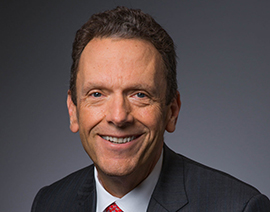COVID-19 has proven that the health care industry has the ability to transition into new models of care to treat vulnerable patient populations, powered by a surge in usage of virtual health technology. But the pandemic has also showed that this transformation has to be a team effort.
“I’ve never seen more industry collaboration than I have over the last five months,” said Alan Wheatley, Segment President, Retail, Humana on a recent Health Evolution Executive Briefing webcast. “We all agreed that we were going to try to be part of the solution, not part of the problem through the pandemic. We’ve tried to work collectively as an industry to advance the provider’s ability to see patients and the patient’s ability to connect with providers.”
Wheatley participated with TripleTree Head of Investment Banking Justin Roth and David Holmberg, President & CEO, Highmark Health and Chairman of the Blue Cross Blue Shield Association Board of Directors for the virtual gathering, Payer CEO Insights: New Directions for Virtual Health and Payer-Provider Relationships.
“Back in February, when we all started to realize the gravity of what was happening, it became clear that a war effort was necessary based on what we were seeing in China, Italy and then New York. What we found was that people were willing to work together and partner with some folks who hadn’t done that before. It was critical to the survival of our patients and the communities that we know and live in,” said Holmberg.
The experts detailed how partnerships between payers, providers, health IT vendors, government officials and outside stakeholders didn’t just help during the pandemic, but are important for:
- Standing up and running a successful virtual health program
- Engaging patients and keeping them active in their health care, regardless of where they live
- Shifting to new models of care, where reimbursement is based on improved outcomes rather than fee for service
- Improving care within communities
Standing up a successful virtual health program
Both Humana and Highmark health plans, as well as the Allegheny Health System, which is a part of Highmark Health, saw substantial increases in virtual health usage since the pandemic began. Holmberg said the health plan has processed 1.2 million virtual claims since the pandemic began and the Allegheny Health System has gone from 25 virtual appointments per day to 4,000. Wheatley said Humana had 50,000 telehealth visits across its 46-state footprint for all of 2019. Between March and the end of July, they’ve had more than two million.
In terms of partnerships, Wheatley gives a lot of credit to EHR vendors for moving quickly to make the virtual experience easier for providers. He said the EHR vendors understood their concerns and worked with them. Holmberg saw the same thing on his side. “Whether it was Epic or any of the other systems, there was a rapid reassignment of priorities that really helped facilitate this and get care to people who otherwise would have not had the access,” he noted.
Moreover, the health plan executives credit providers for their willingness to use virtual health and educate themselves. Not only were docs able to connect with patients, Holmberg said, but with their fellow doctors as well. “We’re partnering with [St. Louis-based telehealth company] Mercy Virtual and we’re doing virtual ICUs. The advantage to that is you have a community hospital that doesn’t have the ability to recruit an ICU team but through virtual medicine, we can support them and give them that team,” he said.
In terms of government partners, Wheatley credits CMS for quickly changing payment models to make it financially conducive and reasonable for providers to leverage technology. He said it’s very important for those temporary changes around telehealth usage to become permanent, once the public health emergency order ends. “It’s very important that providers get paid for the services they render and those incentives to continue to leverage that capability need to be there,” he said.
Engaging patients
It wasn’t enough for Highmark and Humana to just help providers stand up a virtual health operation. If their members, especially those who are vulnerable and suffer from multiple chronic illnesses, weren’t utilizing the technology then it would have become a moot point. As such, the health plans had to rely on partnerships and strategies to engage their patient populations and do it in a seamless way, as Roth noted.
The biggest strategic ally in this regard were the providers themselves. Wheatley worked with doctors, nurses, and other care management professionals to reach out to members. The health plan, he noted, made one million calls to its customers. “We facilitated many direct connections between providers in the community and our members through telehealth, he said. Roth added that “providers are really on the front lines of building, maintaining, and enhancing relationships with the members” that the health plans serve.
Holmberg said that virtual health tech allowed them to have better contact with its members in Arizona, Florida and places that are outside its main region in Western Pennsylvania. “While we don’t have as much direct contact with them as we do and in the states we operate in, we have extended these virtual relationships and we’re partnering with innovative tech companies and innovative care solutions in order to maybe change the game a bit,” he said.











